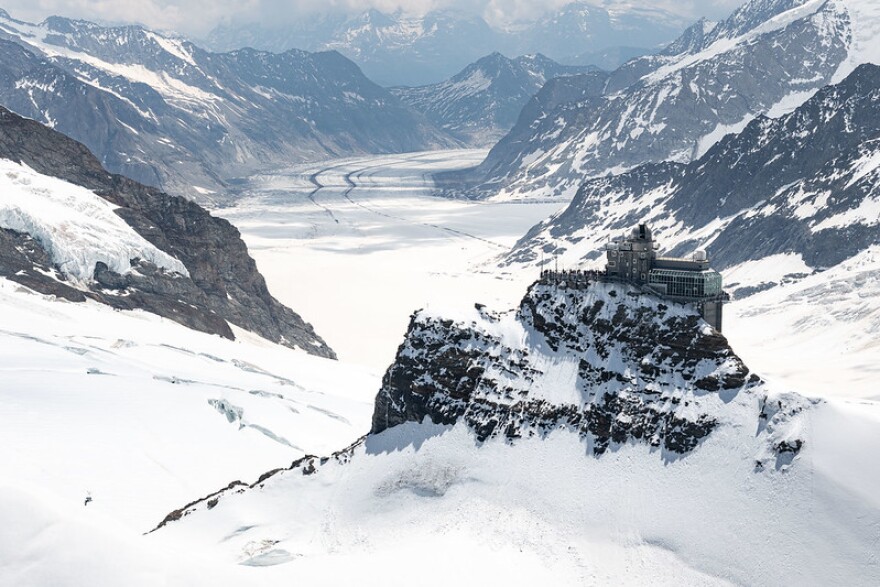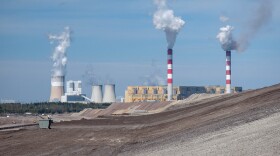Switzerland has over 1,400 glaciers. Some of them are world famous, including the largest one, the Aletsch Glacier, which is a World Heritage Site located in the Barnese Alps. At its deepest point, it is about 3,000 feet thick. But like other glaciers in Switzerland, the Aletsch is shrinking – by more than 150 feet per year due to global warming. In total, more than 1,000 small glaciers have melted away entirely since the 1970s.
Glacial melting in Switzerland this year has been enormous. A winter with a small amount of snow combined with heat waves in June and August has resulted in a loss of 3% of Switzerland’s total glacier volume. This is the fourth largest amount of glacier shrinkage since measurements have been made. The greatest shrinkage has been in 2022, 2023, and 2003, in order. Overall, total glacial ice mass in Switzerland has been reduced by a quarter over the past 10 years. Snow reserves from this winter were depleted by the first half of July and ice masses began to melt earlier than rarely ever recorded.
Glaciers at lower elevations - below 10,000 feet above sea level - have suffered the most. On these smaller Alps, snow from the winter has disappeared all the way up to the summit level.
The ongoing diminishing of glaciers is a threat to the important Swiss tourist industry. But more importantly, it contributes to the destabilizing of mountains. Examples are events such as the Lötschental valley where an avalanche of rock and ice buried the village of Blatten, which was almost entirely destroyed this past May.







